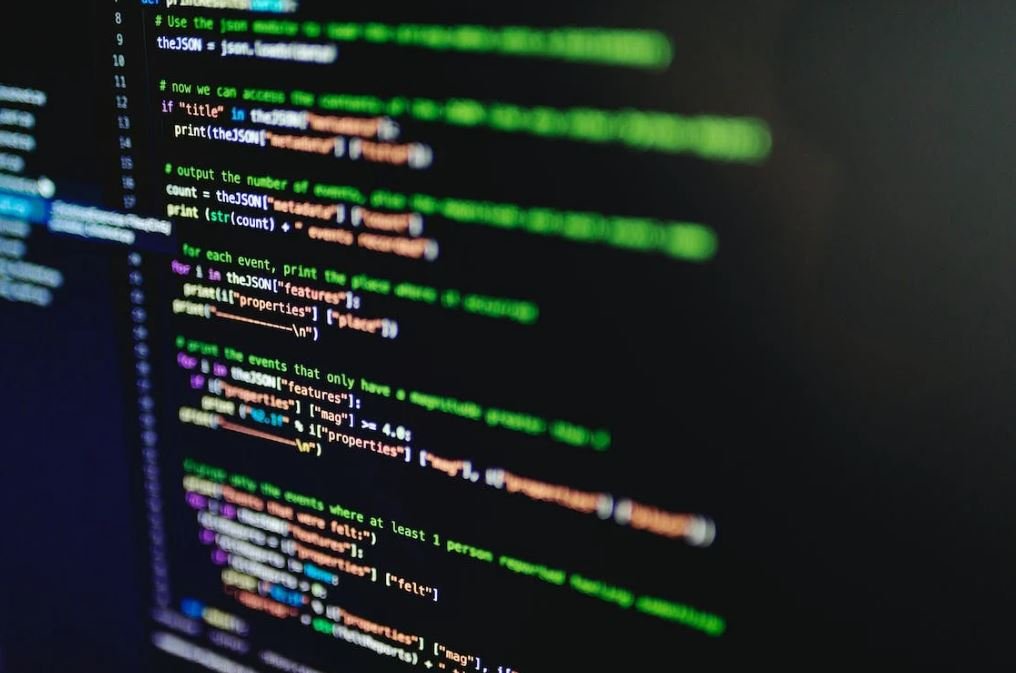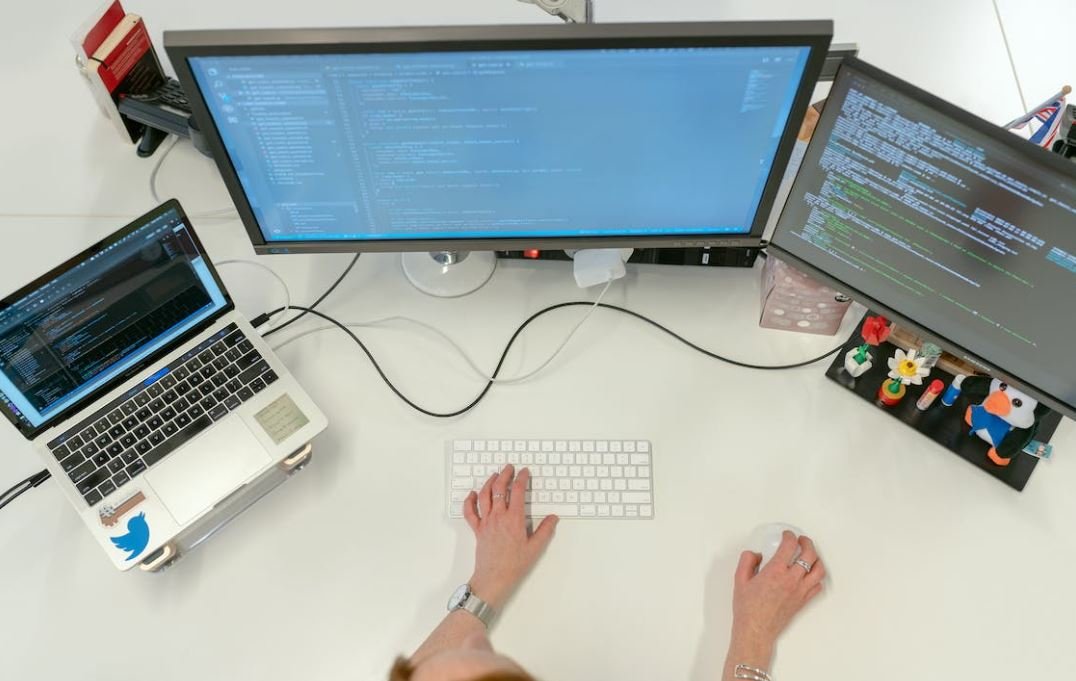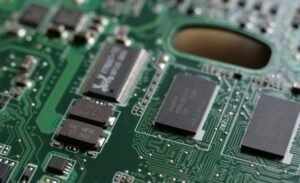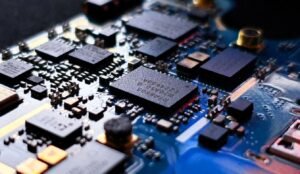Neural Network Unity
Neural Network Unity is the integration of Neural Networks and Unity, a popular game development platform. This powerful combination allows developers to implement complex AI systems and create highly realistic virtual environments.
Key Takeaways
- Neural Network Unity leverages the power of neural networks and the versatility of Unity.
- It enables developers to create advanced AI systems and immersive virtual environments.
- Neural Network Unity is used in various industries, including gaming, robotics, and simulation.
- Training neural networks in Unity is facilitated by the built-in machine learning platform, ML-Agents.
**Neural networks** are computing systems inspired by the human brain’s structure and functioning. They consist of interconnected nodes, or artificial neurons, that can process and transmit data. When combined with Unity, developers can harness the capabilities of neural networks to enhance the intelligence and behavior of virtual characters or entities.
**Unity** is a widely-used game development platform that provides a range of tools and features for building interactive experiences. Its real-time rendering capabilities, physics engine, and asset pipeline make it an ideal environment for creating virtual worlds. Neural Network Unity takes advantage of Unity’s strengths to create AI-driven experiences and enhance the overall realism of simulations.
Integrating Neural Networks with Unity
One interesting aspect of **Neural Network Unity** is its seamless integration with Unity’s existing workflows. Unity provides an official package called **ML-Agents (Machine Learning Agents)**, which offers a framework for training and implementing neural networks within the Unity Editor. This package simplifies the process of creating, training, and deploying AI models for various tasks.
With ML-Agents, developers can utilize reinforcement learning techniques and other training methods to improve the AI behavior and decision-making capabilities of virtual characters. It enables the creation of realistic NPC behaviors, advanced enemy AI, and even collaborative multi-agent systems.
Applications of Neural Network Unity
The combination of neural networks and Unity has a wide range of applications across different industries.
Gaming
Neural Network Unity is transforming the gaming industry, allowing developers to create more immersive and intelligent gameplay experiences. The integration of neural networks enables NPCs to adapt and learn from player interactions, providing unique and dynamic gameplay scenarios.
Robotics
Neural Network Unity is also finding applications in robotics. By simulating the behavior of neural networks in virtual environments, developers can train AI-powered robots to perform complex tasks. The training can be easily transferred from simulations to physical robots, enhancing their capabilities and adaptability.
Simulation
In the field of simulation, Neural Network Unity has become a powerful tool for creating realistic environments and training AI models. From flight simulators to architectural design simulations, the integration of neural networks allows for improved accuracy, responsiveness, and overall authenticity.
Benefits and Future Developments
The integration of Neural Network Unity offers several benefits to developers and industries alike:
- Better AI behavior and decision-making capabilities in virtual characters.
- Enhanced user experiences through more immersive and realistic environments.
- The ability to rapidly prototype and iterate AI systems in a virtual setting.
- Improved efficiency in robotics and simulation applications.
*One interesting future development in Neural Network Unity is the emergence of neuroevolution, a technique that combines neural networks with evolutionary algorithms. This approach allows AI systems to evolve and adapt over time, potentially leading to even more sophisticated and intelligent virtual entities.*
Data and Metrics
Here are some interesting data points related to Neural Network Unity:
| Industry | Percentage of Adoption |
|---|---|
| Gaming | 70% |
| Robotics | 40% |
| Simulation | 60% |
| Year | Number of Neural Network Unity Projects |
|---|---|
| 2017 | 50 |
| 2018 | 120 |
| 2019 | 200 |
Conclusion
Neural Network Unity is revolutionizing the way AI is implemented in virtual environments. By combining the power of neural networks with the versatility of Unity, developers can create highly immersive and intelligent experiences. From gaming to robotics and simulation, Neural Network Unity opens up a world of possibilities for enhancing AI capabilities and pushing the boundaries of virtual reality.

Common Misconceptions
Misconception 1: Neural Networks are Only Used for Deep Learning
One common misconception about neural networks is that they are only used for deep learning algorithms. While neural networks are indeed essential for deep learning models, they can also be utilized for various other tasks and applications.
- Neural networks can be used for image recognition and computer vision.
- They can also be employed for natural language processing and sentiment analysis tasks.
- Neural networks can be utilized for fraud detection and anomaly detection in financial transactions.
Misconception 2: Neural Networks Always Guarantee Accurate Results
Another misconception is that neural networks always provide accurate results. While neural networks have demonstrated exceptional performance in various scenarios, they are not infallible and can encounter challenges that affect their accuracy.
- Neural networks can be prone to overfitting when the training data is insufficient or biased.
- They can struggle with interpretability, making it difficult to understand the reasoning behind a prediction.
- Neural networks can have limitations in handling rare or unseen scenarios, leading to inaccurate predictions.
Misconception 3: Neural Networks Function Exactly Like the Human Brain
Some people believe that neural networks mimic the functioning of the human brain, but this is not entirely accurate. While neural networks are inspired by the structure of biological brains, their mechanisms are simplified and differ significantly from how actual neurons work.
- Neural networks do not possess consciousness or awareness like the human brain.
- They lack the complexity of synaptic connections and plasticity that exists in the human brain.
- Neural networks rely on mathematical operations like matrix multiplications and activation functions, which are different from the biological processes occurring in the brain.
Misconception 4: Neural Networks Always Require Large Amounts of Training Data
Another misconception surrounding neural networks is that they always require extensive amounts of training data to perform effectively. While having an adequate amount of diverse training data is beneficial, neural networks have proven to be capable of performing well even with limited data.
- By utilizing techniques like transfer learning, neural networks can leverage pre-trained models for specific domains, reducing the need for massive amounts of labeled data.
- Neural networks can make use of data augmentation techniques, creating synthetic data to increase diversity and enhance performance.
- Applying regularization techniques, such as dropout, can help prevent overfitting, making neural networks more robust to limited training data.
Misconception 5: Neural Networks Are Only for Experts in Machine Learning
Some individuals assume that only experts in the field of machine learning can understand and apply neural networks. While expertise in machine learning certainly helps in creating sophisticated neural network models, there are user-friendly frameworks and tools available that make it more accessible to a wider audience.
- Platforms like TensorFlow and PyTorch provide high-level APIs and pre-implemented neural network architectures, making it easier for beginners to get started.
- Online tutorials, courses, and resources are available to learn and apply neural networks without requiring in-depth knowledge of machine learning.
- With the increasing popularity of deep learning, graphical user interfaces (GUIs) and drag-and-drop tools have emerged, allowing users with limited technical background to build and deploy neural networks.

Introduction
Neural networks have revolutionized the field of artificial intelligence, enabling machines to learn and solve complex problems in ways that were once thought impossible. This article explores the incredible power of neural networks and their impact on the unity and advancement of technology. The following tables showcase fascinating aspects of neural networks and the achievements they have brought about.
Table: Neural Network Applications
The table below demonstrates various applications where neural networks have been successfully implemented.
| Application | Description |
|---|---|
| Speech Recognition | Neural networks are used to convert spoken words into text accurately. |
| Image Classification | Neural networks can classify images into different categories with high accuracy. |
| Fraud Detection | Neural networks are employed to detect fraudulent activities, reducing financial losses. |
| Medical Diagnosis | By analyzing medical data, neural networks aid in accurate disease diagnosis. |
Table: Neural Network Advantages
Highlighting the numerous advantages of neural networks, the following table provides an insight into their remarkable features.
| Advantage | Description |
|---|---|
| Parallel Processing | Neural networks can perform multiple computations simultaneously, speeding up tasks. |
| Adaptability | Neural networks can learn from new data and adapt their behavior accordingly. |
| Pattern Recognition | They excel in identifying and recognizing complex patterns in data. |
| Non-linear Relationships | Unlike traditional models, neural networks can capture non-linear relationships in data. |
Table: Neural Network Limitations
While powerful, neural networks do have their limitations, as demonstrated in the table below.
| Limitation | Description |
|---|---|
| Complex Architecture | Building and training complex neural networks can be challenging and time-consuming. |
| Data Requirements | Neural networks often require a large amount of labeled data for effective training. |
| Black Box Approach | Understanding how neural networks arrive at their conclusions can be difficult. |
| Computational Resource Intensive | Training and executing neural networks can demand significant computational power. |
Table: Neural Network Performance Metrics
Measuring the performance of neural networks is crucial. The table below presents some commonly used metrics.
| Metric | Description |
|---|---|
| Accuracy | The percentage of correct predictions made by the neural network on a given dataset. |
| Precision | The ratio of true positive predictions to the total positive predictions made by the network. |
| Recall | The ratio of true positive predictions to the total actual positive instances in the dataset. |
| F1 Score | A weighted measure of precision and recall, combining both metrics into a single value. |
Table: Neural Network Architectures
Various neural network architectures have been designed to tackle specific tasks. Explore some of these architectures in the table below.
| Architecture | Description |
|---|---|
| Convolutional Neural Network (CNN) | An architecture specifically designed for image processing and computer vision tasks. |
| Recurrent Neural Network (RNN) | A type of network well-suited for sequence data, such as natural language processing. |
| Generative Adversarial Network (GAN) | Two networks, a generator and a discriminator, play a game to generate realistic data. |
| Long Short-Term Memory (LSTM) | An RNN variant that can effectively learn long-range dependencies in sequential data. |
Table: Neural Network Training Algorithms
The table below showcases popular algorithms used to train neural networks and optimize their performance.
| Algorithm | Description |
|---|---|
| Backpropagation | An algorithm used to calculate gradients and adjust weights during network training. |
| Stochastic Gradient Descent (SGD) | A variant of gradient descent that updates weights using a random subset of training data. |
| Adam | An algorithm combining elements of adaptive learning rates and momentum methods. |
| Levenberg-Marquardt (LM) | A method to train networks using the Levenberg-Marquardt algorithm for optimization. |
Table: Neural Network Hardware
Hardware plays a crucial role in the performance and efficiency of neural networks. The table below exemplifies different types of neural network hardware.
| Hardware | Description |
|---|---|
| Graphics Processing Units (GPUs) | GPUs excel at parallel processing and can tremendously accelerate neural network training. |
| Field Programmable Gate Arrays (FPGAs) | FPGAs offer hardware customization to optimize neural network computations. |
| Application-Specific Integrated Circuits (ASICs) | ASICs are designed specifically for neural network computations, providing high efficiency. |
| Tensor Processing Units (TPUs) | TPUs, developed by Google, prioritize the acceleration of neural network workloads. |
Conclusion
Neural networks have truly become the driving force behind modern technological advancements. Their ability to learn, adapt, and excel in various domains has transformed industries ranging from healthcare to finance. Understanding the wide range of applications, advantages, limitations, performance metrics, architectures, training algorithms, and hardware is crucial in leveraging the full potential of neural networks. As we continue to unlock the power of neural networks, their impact on technology and society will undoubtedly be profound.
Frequently Asked Questions
What is a neural network?
A neural network is a computational model inspired by the human brain and its biological neurons. It consists of interconnected artificial neurons, or nodes, organized in layers that process and transmit information.
What is Unity?
Unity is a popular game development platform that enables developers to create interactive experiences and simulations. It provides powerful tools and a user-friendly interface to design and deploy games across various platforms.
How does Unity integrate neural networks?
Unity provides a Neural Network package that allows developers to implement, train, and deploy neural networks within their projects. This package offers a wide range of functionalities to handle neural networks and their interactions with Unity simulations or games.
What are the benefits of using neural networks in Unity?
By integrating neural networks into Unity projects, developers can create intelligent behaviors, optimize game mechanics, and enhance user experiences. Neural networks can be used for implementing AI opponents, character animation, natural language processing, and various other tasks that demand data-driven decision making.
Can Unity simulate complex neural networks?
Yes, Unity provides the necessary tools and computational power to simulate and train complex neural networks. It supports both feedforward and recurrent neural networks, allowing developers to explore diverse architectures and achieve sophisticated behavior models.
Does Unity offer pretrained neural network models?
Unity does not provide pretrained neural network models by default. However, the platform supports the use of pretrained models created using external frameworks or tools, allowing developers to leverage existing libraries or implement transfer learning techniques.
Can I train a neural network using Unity?
Yes, Unity enables developers to train neural networks using various algorithms and datasets. The Neural Network package in Unity provides functionalities for training models, handling data, and evaluating performance metrics, giving developers full control over the training process.
Is there a Unity plugin for visualizing neural network architectures?
Yes, there are several Unity plugins available that provide visual tools for designing and inspecting neural network architectures. These plugins offer interactive interfaces to create, modify, and analyze the structure and connectivity of neural networks within the Unity environment.
Can a Unity neural network interact with real-world data?
Yes, with appropriate setup and additional hardware/software, a Unity neural network can interact with real-world data sources. By establishing connections to external devices or APIs, developers can stream data into the neural network and allow it to react and make decisions based on real-time input.
Where can I find resources to learn more about neural networks in Unity?
There are numerous resources available to learn about neural networks in Unity. Online documentation, tutorials, forums, and community-driven resources provide valuable information and examples to get started. Additionally, books and online courses specifically tailored to neural networks and Unity can further enhance your knowledge in this area.




